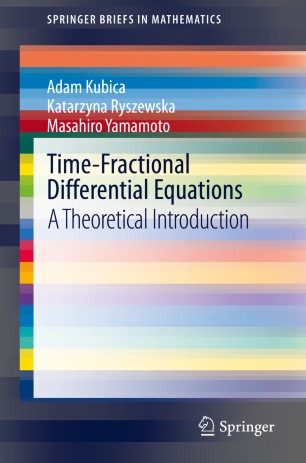

Most ebook files are in PDF format, so you can easily read them using various software such as Foxit Reader or directly on the Google Chrome browser.
Some ebook files are released by publishers in other formats such as .awz, .mobi, .epub, .fb2, etc. You may need to install specific software to read these formats on mobile/PC, such as Calibre.
Please read the tutorial at this link: https://ebookbell.com/faq
We offer FREE conversion to the popular formats you request; however, this may take some time. Therefore, right after payment, please email us, and we will try to provide the service as quickly as possible.
For some exceptional file formats or broken links (if any), please refrain from opening any disputes. Instead, email us first, and we will try to assist within a maximum of 6 hours.
EbookBell Team

4.7
26 reviewsThis book aims to establish a foundation for fractional derivatives and fractional differential equations. The theory of fractional derivatives enables considering any positive order of differentiation. The history of research in this field is very long, with its origins dating back to Leibniz. Since then, many great mathematicians, such as Abel, have made contributions that cover not only theoretical aspects but also physical applications of fractional calculus.
The fractional partial differential equations govern phenomena depending both on spatial and time variables and require more subtle treatments. Moreover, fractional partial differential equations are highly demanded model equations for solving real-world problems such as the anomalous diffusion in heterogeneous media.
The studies of fractional partial differential equations have continued to expand explosively. However we observe that available mathematical theory for fractional partial differential equations is not still complete. In particular, operator-theoretical approaches are indispensable for some generalized categories of solutions such as weak solutions, but feasible operator-theoretic foundations for wide applications are not available in monographs.
To make this monograph more readable, we are restricting it to a few fundamental types of time-fractional partial differential equations, forgoing many other important and exciting topics such as stability for nonlinear problems. However, we believe that this book works well as an introduction to mathematical research in such vast fields.